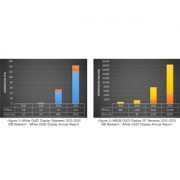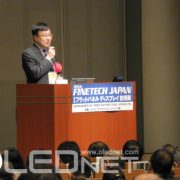LG디스플레이가 미래 디스플레이 선도를 통한 확실한 시장우위를 점하기 위해 OLED 투자를 본격화한다.
LG디스플레이는 지난 26일 이사회를 열어 세계 최대 규모로 OLED 중심의 P10 공장 건설 등에 총 1조 8,400억원 규모의 투자를 결정했다고 밝혔다.
LG디스플레이는 지난 8월 17일, 2018년까지 대형 및 플렉서블 OLED를 중심으로 프리미엄 LCD 분야까지 10조원 이상의 투자를 공표했고 경상북도 구미공장에 1조 500억 규모의 6세대 플렉서블 OLED 신규라인 투자를 결정한바 있다. 6세대 라인은 월 7,500장 생산규모(원장기판 투입기준)로 2017년 상반기 중 양산에 들어갈 계획이다.
특히 이번 P10 공장 건설을 결정하며 차세대 OLED 투자를 본격화할 수 있는 데에는 대형 OLED 생산 시대를 개막한 LG디스플레이만의 화이트 OLED 기술이 있었기에 가능했다.
WRGB방식으로 알려진 화이트 OLED는 기존의 소형 OLED생산에 머무른 RGB방식의 고정관념을 탈피해 혁신에 혁신을 거듭함으로써 8세대 이상의 대형 OLED 생산을 가능하게 한 LG디스플레이의 차별화 기술이다.
또한 OLED에 대한 투자 확대는 LG디스플레이가 대형은 물론 플렉서블 OLED에서도 시장을 선도하겠다는 의지가 반영된 것으로 풀이된다.
따라서 LG디스플레이는 2~3년내 도래할 폭발적 OLED 수요에 선제적으로 대응하고 고객 니즈에 맞추기 위해 우선 이사회에서 결의된 1조 8,400억원을 P10 공장 건설과 이를 위한 용수 및 전력 인프라 구축, 그리고 최첨단 클린룸 기반 구축 등에 사용키로 했다.
LG디스플레이는 대형 및 플렉서블 OLED와 투명과 같은 미래형 제품이 중심이 될 P10 공장에 10조원 이상 투자될 것으로 예상하고 있다.
이는 100조원 이상의 생산유발과 직/간접인원 35만여명의 고용창출 등 경제 파급효과는 물론 세트뿐 아니라 재료부품 및 장비와 같은 전후방 산업의 발전을 통한 국가 경제활성화에도 크게 기여할 것으로 보인다.
※ 참고: 한국은행 산업연관표, 생산유발/고용유발 계수 기준
P10 공장은 9세대 이상 초대형 OLED 생산라인과 플렉서블 OLED라인으로 구성된 OLED 중심 공장으로 운영될 계획이며, 연내 공장 착공을 추진해 2018년 상반기 첫 생산라인 가동을 목표로 하고 있다.
■ 세계 OLED 산업의 중추가 될 P10…정부도 적극적 지원나서
대한민국이 미래 디스플레이 시장을 선도하는데 중추가 될 P10 공장은 OLED를 통해 미래 성장동력으로 육성되는 만큼 장기적인 관점에서 전략적 투자가 이루어진다.
공장부지는 직전 공장인 P9보다 1.5배 큰 382m×265m 규모(축구장 14개 크기)의 부지에 100m이상 높이로 건설될 계획이다.
이를 통해 LG디스플레이는 모바일과 IT용과 같은 중소형부터 초대형 혁신 제품은 물론, 플렉서블과 투명 디스플레이와 같은 미래 제품을 망라한 전영역에 걸친 OLED 제품을 생산한다는 복안이다.
한편 LG디스플레이는 OLED 산업의 미래가 달려있는 만큼 고객 수요 및 시장상황에 대한 면밀한 예측과 검토를 통해 단계적으로 구체적인 생산라인 규모와 규격을 결정키로 했다.
정부 역시 P10이 대한민국의 미래 디스플레이 시장 주도권을 확보하기 위한 선제적 투자인 만큼 대승적 차원에서 중앙정부와 지방정부가 협력해 범정부 차원의 지원을 아끼지 않을 방침이다.
특히 대규모 투자와 함께 적기 생산능력 확보에 필수적인 전력, 공업용수, 폐수종말처리장 등의 산업 인프라 구축에 있어 신속한 행정 서비스가 이뤄질 수 있도록 중앙정부, 지방정부, 한전 및 수자원 공사 등이 참여하는 범정부 합동지원반 TF를 구성해 적극적으로 지원하기로 했다.
정부는 지난 7월 OLED를 차세대 수출 유망품목으로 선정, 선제적 투자를 통한 차별화된 경쟁력 확보를 위해 ‘OLED 제조장비 할당관세 지원’, ‘AMOLED 원천기술 R&D 세액공제 일몰연장’등의 정책과 내수진작을 위한 ‘OLED TV 개별소비세 폐지’등으로 적극적인 지원을 아끼지 않고 있다.
■ OLED, 기술적 우수성 힘입어 수요 증가 중
LG디스플레이는 디스플레이 사업의 경쟁우위를 지속하기 위해 OLED를 시장의 판도를 바꿀 게임 체인저(Game Changer)로 선정, 미래 성장동력으로 육성하기로 하고 LG그룹 차원의 모든 역량을 집중해 나가기로 결정한바 있다.
OLED의 경우 투명과 플렉서블 등 미래 디스플레이 제품 구현에 최적의 기술로 평가 받고 있으며, 무한대의 명암비, 풍부하고 정확한 색표현력, 그리고 LCD보다 1,000배 빠른 응답속도 등 전반적인 화질과 디자인 측면에서 OLED는 최고의 디스플레이로 인정받고 있기 때문이다.
이러한 기술적 우수성에 힘입어 시장에서도 OLED에 대한 수요가 서서히 늘어나고 있는 추세다.
실제로 OLED TV의 경우, LG전자와 함께 중국의 스카이워스, 창홍, 콘카가 UHD OLED TV를 출시했으며 일본의 파나소닉도 UHD 해상도의 65인치 OLED TV를 유럽시장에 이어 내년부터는 일본 내수시장에서도 본격 선보일 예정인 것으로 알려지고 있다. 또한 일본과 유럽의 글로벌 가전사들이 OLED TV 시장 진출을 모색중이기도 하다.
이외에 웨어러블의 경우 이미 대다수의 글로벌 업체들이 LCD 보다는 디자인 자유도가 높은 OLED로 스마트워치와 같은 웨어러블 기기를 선보이고 있으며, 자동차용 디스플레이의 경우 조만간 OLED를 채택한 자동차가 선보일 것으로 기대되고 있다.
■ OLED로의 전환은 선택이 아닌 필연
이러한 OLED에 대한 고객의 관심과 함께 전체 시장측면에서 OLED로의 전환은 선택이 아닌 필연으로 다가오고 있다.
LCD 중심의 디스플레이 시장은 대형화와 고해상도, 폼팩터 및 부가기능 추가가 점점 한계에 봉착해 있는 상황속에서 남은 것은 OLED가 유일한 대안으로 부각되고 있는 추세다.
즉, OLED 고유의 독보적인 화질 우수성을 기반으로 한 디자인 유연성과 투명 및 플렉서블로의 미래 디스플레이 구현 가능성이 고객 가치를 지속적으로 실현하는데 최선의 선택임이 증명되고 있기 때문이다.
그래서 디스플레이 역사의 큰 흐름은 TV의 기본 기술이 CRT→PDP→LCD에 이어 OLED로 대체되어 가고 있는 것이다.
이에 OLED는 범용화 되어가는 LCD와 달리 프리미엄 제품으로의 입지를 확실히 굳혀가고 있어 차세대 디스플레이 시장을 선도하는데 매우 유리한 포지셔닝을 확보하고 있다.
LG디스플레이 CEO 한상범 사장은 “LG디스플레이의 P10 투자는 한국이 디스플레이 산업에서 OLED를 통해 경쟁국의 추격을 뿌리치고 지속적으로 시장을 선도하기 위한 역사적 투자”라며, “P10 건설에 따른 산업 인프라 구축에 정부가 적극적인 지원을 하기로 한 만큼 LG디스플레이는 P10을 반드시 세계 OLED 산업의 허브로 육성해 디스플레이 강국의 위상을 이끌어 나갈 것” 이라고 말했다.
































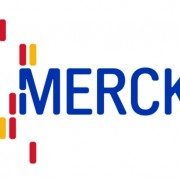














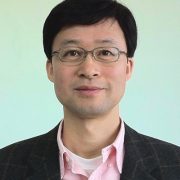












































































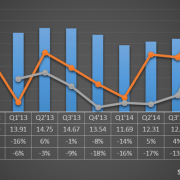










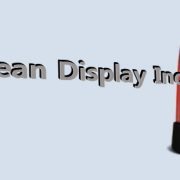
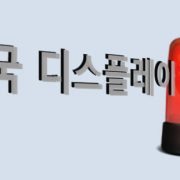












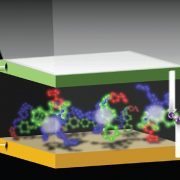

 .
. 





























